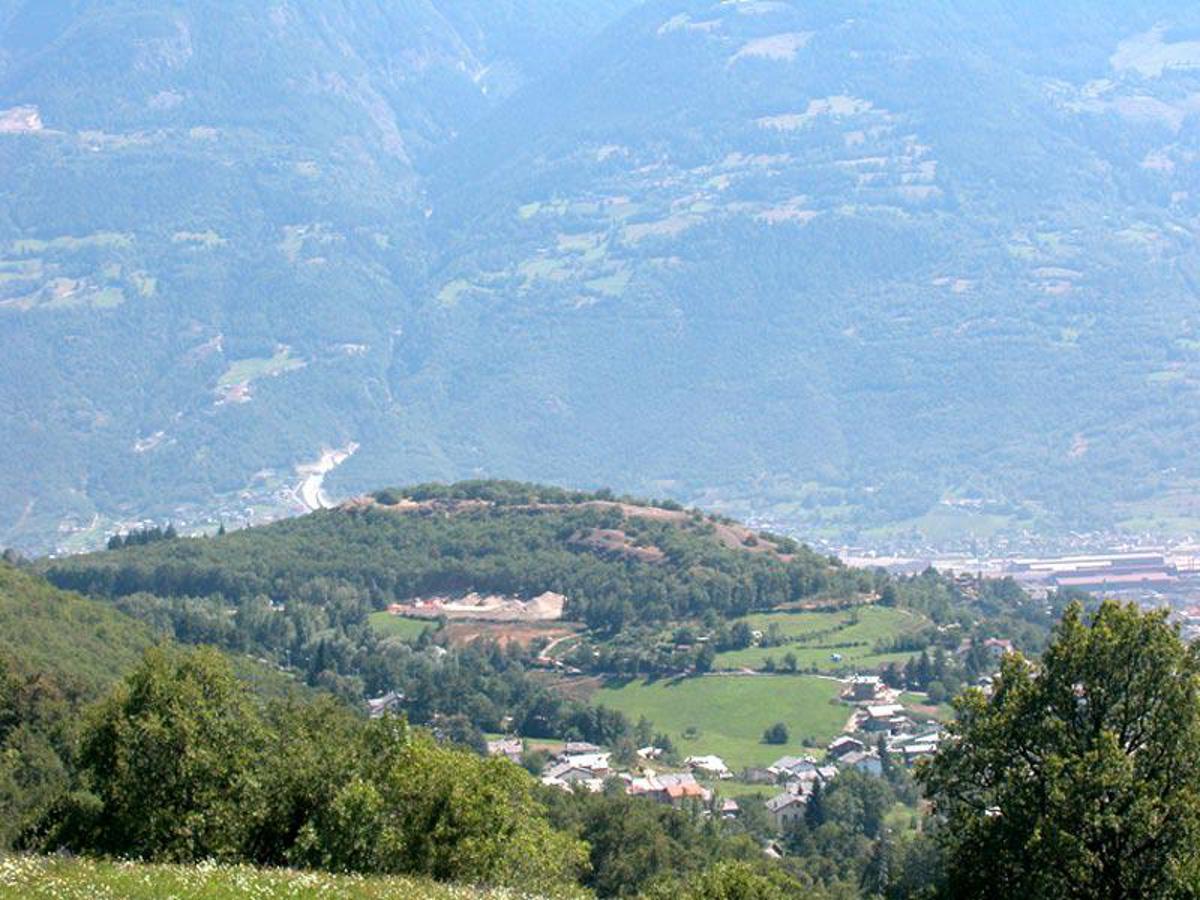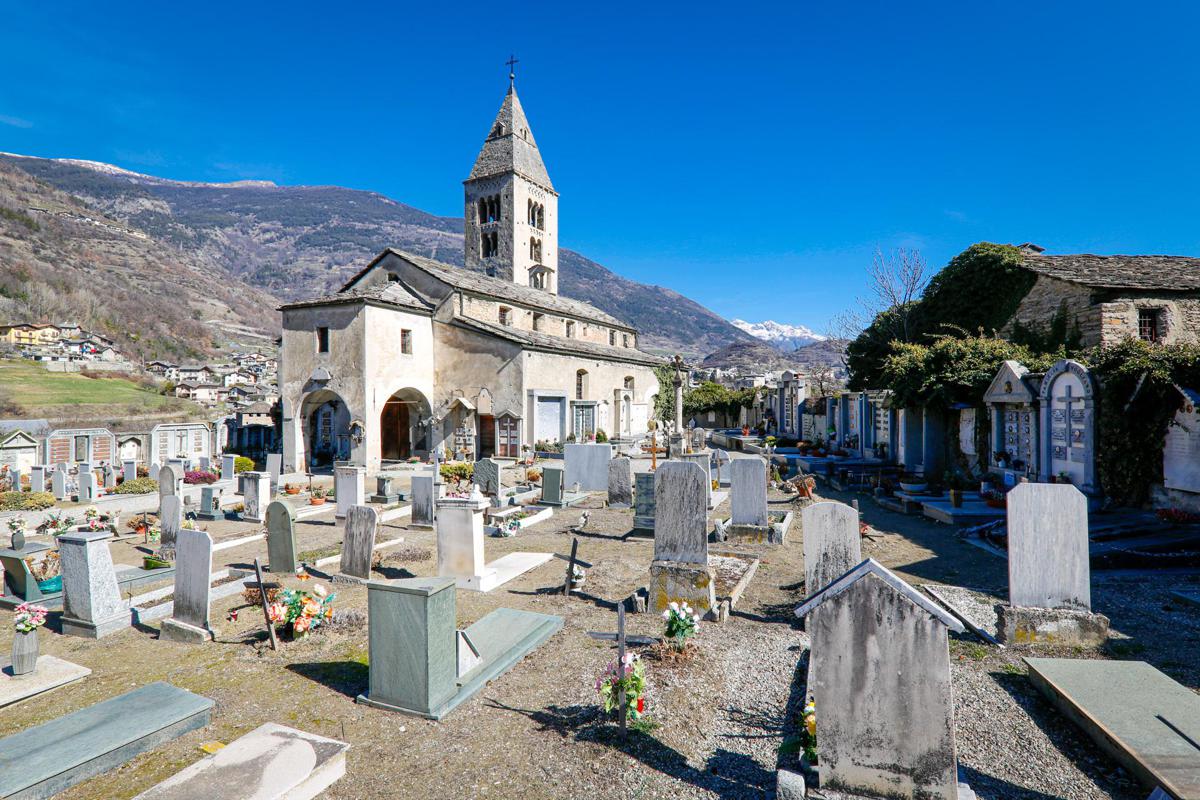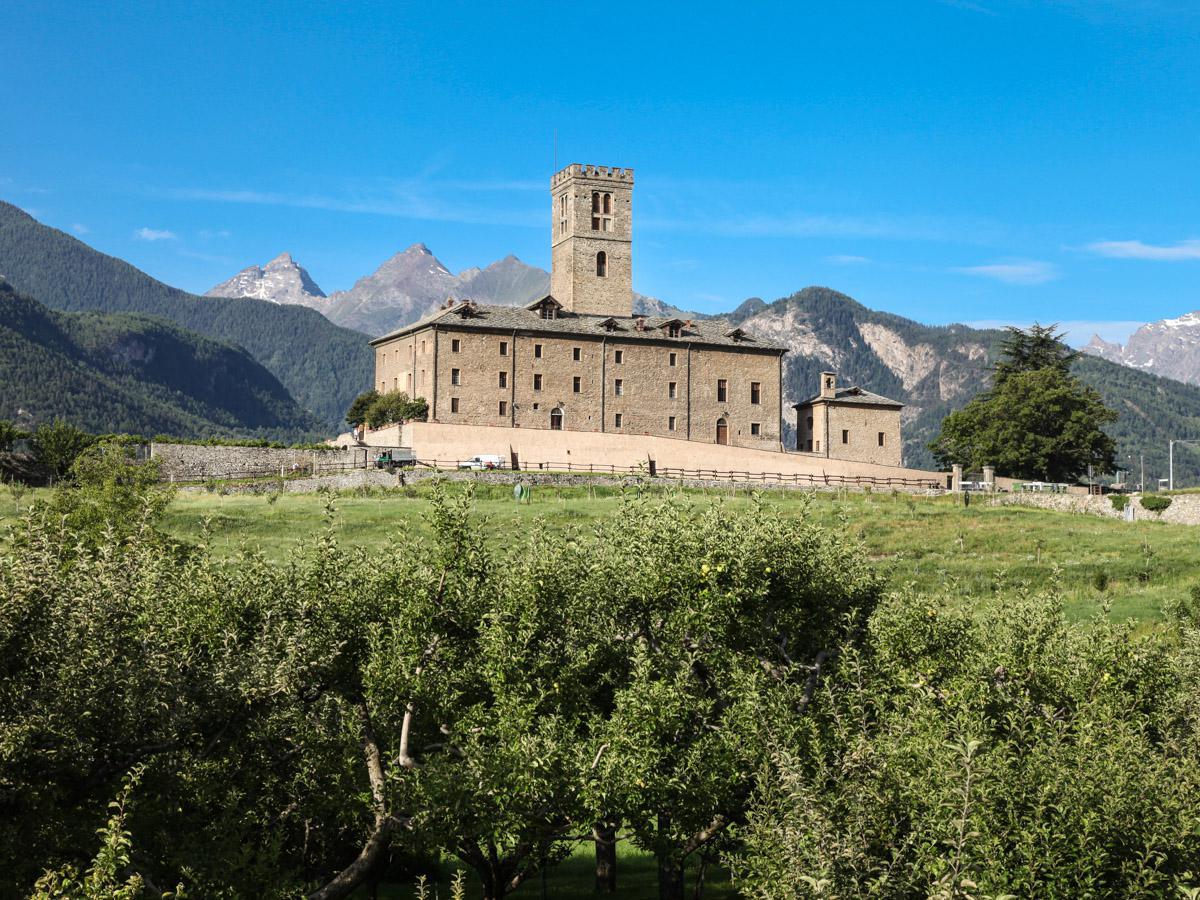Torrette
The “Torrette” area is commonly referred to as that of the 11 Municipalities: Quart, Saint-Christophe, Aosta, Charvensod, Gressan, Jovençan, Sarre, Aymavilles, Saint-Pierre, Villeneuve, Introd which, by geographical position, are flanked by Brissogne and Pollein.
This area includes the largest range of Valle d’Aosta viticulture. A peculiarity is that the vine is also widely cultivated on the right orographic side, the Envers, which has a lower slope and in which the wider catchment area leaves room for hilly areas with excellent exposure during most of the growing season. The typical training system is to row in counter-espalier, which has completely replaced the ancient sapling. The whole area is characterized by the Petit rouge vine, which is well suited to the territory thanks to its remarkable tolerance to cold and drought.
To this are added other autochthonous strains scattered in the vineyards such as Mayolet, the earliest of the Aosta Valley autochthonous, Cornalin, widespread above all in the old vineyards of Aymavilles very often in association with Petit rouge and Fumin, and Vuillermin.
The main and best known red wine produced is Torrette, which takes its name from Mount Torrette, modeled by the passage of glaciers that have left traces in the mountain rocks, located in the area between Sarre and Saint-Pierre.
The south-facing slope that from Quart reaches Sarre at an altitude between 600 and 900 m asl presents optimal conditions for the good ripening of a wide range of varieties, from the earliest ones (Gamaret, Müller Thurgau, Pinot grigio, Chardonnay) to the later ones (Fumin, Syrah, Petite Arvine).
Geographical mention: Torrette
Open wineries
Quart
Azienda vitivinicola Cave Monaja
Azienda vitivinicola Grosjean Vins s.s.
Azienda vitivinicola Rosset Terroir
Distillerie St. Roch – Levi – Ottoz
Saint-Christophe
Azienda vitivinicola Società Agricola Noussan S.S.
Azienda vitivinicola Vintage s.s. Agricola
Aosta
Azienda vitivinicola Les Petits Riens
Azienda vitivinicola Le Vieux Joseph
Azienda vitivinicola Maison agricole D&D
Azienda vitivinicola Ottin Elio
Azienda vitivinicola Tanteun e Marietta
Institut Agricole Régional
Gressan
Azienda vitivinicola Cave Gargantua
Azienda vitivinicola Diego Curtaz
Azienda vitivinicola La Cantina di Cunéaz Nadir
Jovençan
Azienda vitivinicola Clos Blanc
Azienda vitivinicola Crotta di Prado di Constantin e Jean Paul Praz
Azienda vitivinicola Edoardo Braga Vini
Azienda vitivinicola Le Clocher
Aymavilles
Azienda vitivinicola Gerbelle Didier – L’Atoueyo
Azienda vitivinicola Les Crêtes
Cantina sociale “Cave des Onze Communes”
Saint-Pierre
Azienda vitivinicola Château Feuillet
Azienda vitivinicola Di Barrò
Azienda vitivinicola Di Francesco-Gasperi Vino&Spiriti
Azienda vitivinicola La Source S.a.s. di Celi Stefano
Azienda vitivinicola Le Grain
Azienda vitivinicola Pellissier
Villeneuve
Azienda vitivinicola De Santis Anna
Azienda vitivinicola La Plantze
Azienda vitivinicola Maison Anselmet





